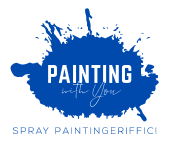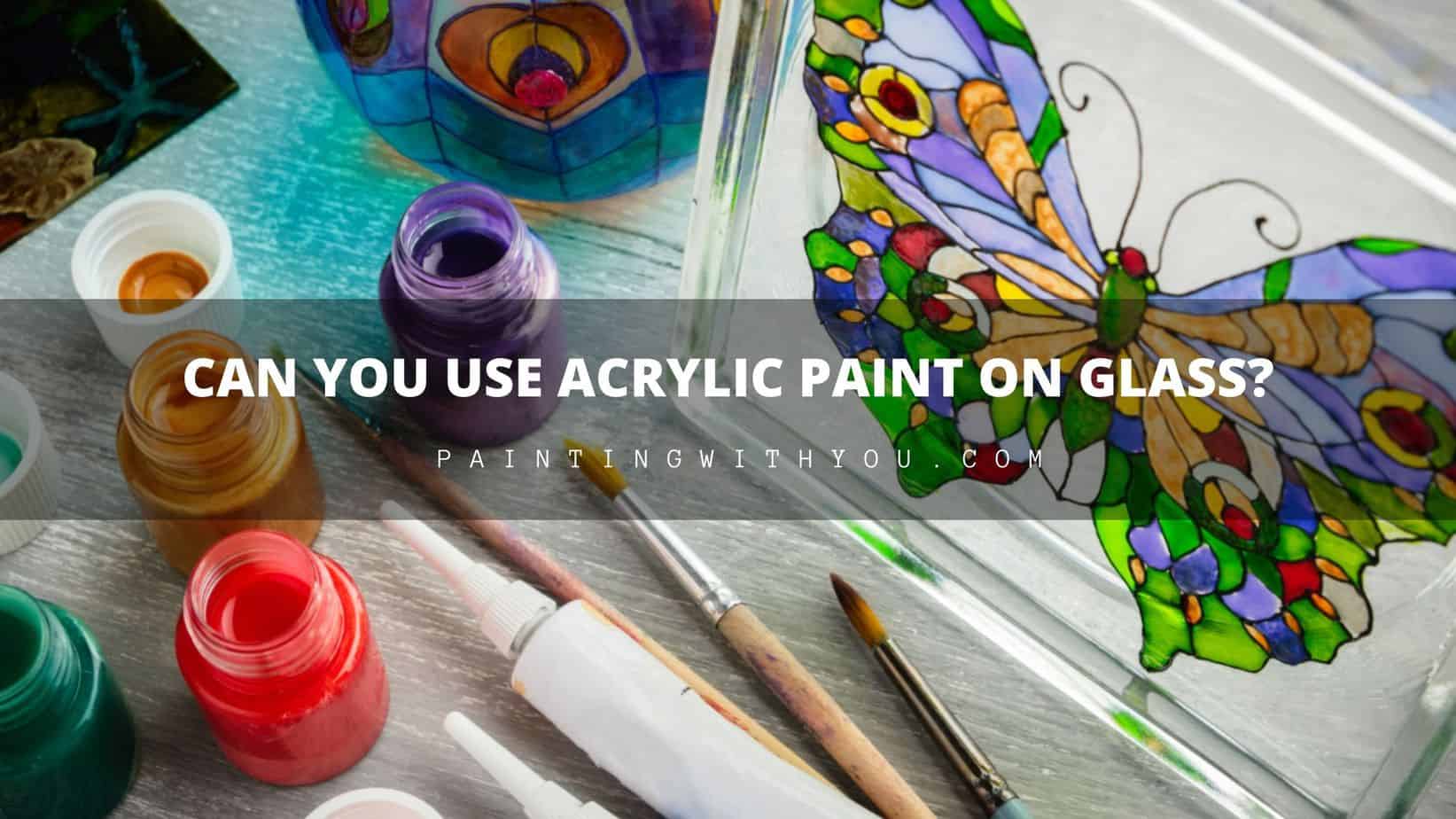Vibrant colors or not, a ton can be done with acrylic paint and glass. Wine glasses (notice my first thoughts), vases, windows, jars, ornaments, the list goes on and on.
When I first started, I was worried about messing up! can acrylic paint be used on glass? does it work?
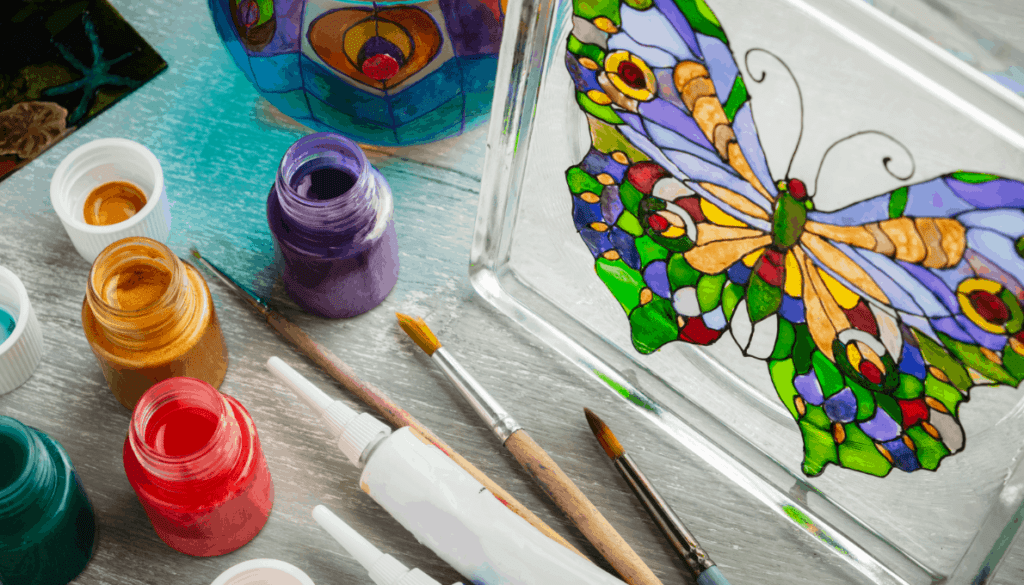
However, you will have an amazing finished product with the right brushes, acrylic paint colors, and pro tips on covering up your itty-bitty mess.
Acrylic paint and glass surface work wonder together. Glass surface is a smooth glass surface that can be flexible to work with.
Acrylic paint is a popular choice for glass painting because it dries quickly, comes in a wide variety of colors, and is non-toxic and water-soluble.
Just wash your hands if they start looking like the rainbow. However, I think the best part is that glass and acrylic paints can be pretty inexpensive!
“Alright, Alright, Alright,” let’s get down to it. This article will help you with a ton of questions you would naturally googling. Instead, I complied, researched, used my best practices, and rolled it all into one for your convenience.
Everything from choosing the right paint to the right brush to the end product is at the tip of your fingers- keep reading!
What is the Right Type of Acrylic Paint for Glass?
Time to choose our paint! Acrylic Enamel to any acrylic paints marked for use with tile or glass and is solvent based works well. It works well because glass is a smooth glass surface. It’s easy to apply acrylic paint without encountering problems of painting it over rough surfaces.
The more opaque the color the better
Acrylic paint comes in a variety of colors, so there is a lot to choose from. As always, the higher the quality the better. Based on your project, buy a kit covering more than just a few colors.
The best acrylic paints to start your research on is Folk Art.
Which Type of Painting Brush is Best for Glass?
Who knew there were so many options? Brushes can be just as crucial as acrylic paint. Be picky if you want your end piece to stand out.
So, let’s get down to it.
Best Hair Type of the Brush
Yeah seriously, that’s a thing! Should you go for the Hog Bristle, Camel hair, Ox Hair or Synthetic (nylon)?
My answer: Synthetic nylon for sure! And I’m not just saying that because I’m an animal lover. Okay, I am. Anyhow, synthetic nylon gives you a better brush that can last longer. The bristles stay longer, whereas the animal hair can be hard to manage.
Nylon brushes are much easier to clean and are versatile. Which means you can use them for oil paintings too.
Now for Paint Brush Numbers
What are those – right? So many sizes, and how am I going to figure it out? Well, remember the smaller the number the lower the width and the higher the number the high width.
NOTE: Keep in mind that depending on the brand, sometimes the numbers might not match across the board.
Style of the Brush
It really depends on what you are using it for. Here is a quick and simple breakdown of brush types:
- Acrylic Paint Wash Brush is a big brush used for larger surfaces or glass surfaces. Think windows! Yes, you can paint windows with acrylics (keep reading below).
- The angled brush has an angled or slanted tip and is handy for those curvy curves! So, think glasses and vases!
- Flat brush – it’s like a wash brush, but not because it’s not as thick. It’s still for large areas but not too large.
- Fan Brush – painting a tree on your glass? Well, this brush will do the work for you. It’s all in the name.
- Round Brush – pretty self-explanatory here, but the best part of this brush is that if you can hold a pencil, you can hold this.
- Line Brush – it’s all in the detail! Think thin lines.
How to prepare glass before painting it?
It’s swim time! Think of it as a swim for your glassware. We got our brushes and our glass, but now we have to prep.
- First thing is first, clean your glass. Take your glass item for a long dip in the sink with warm soapy water to remove debris.
- Let it air dry.
- When it is done drying, wipe the entire glass off with a paper towel or a soft cloth. You can use rubbing alcohol too, to wipe it down.
- Let it air dry again from the rubbing alcohol.
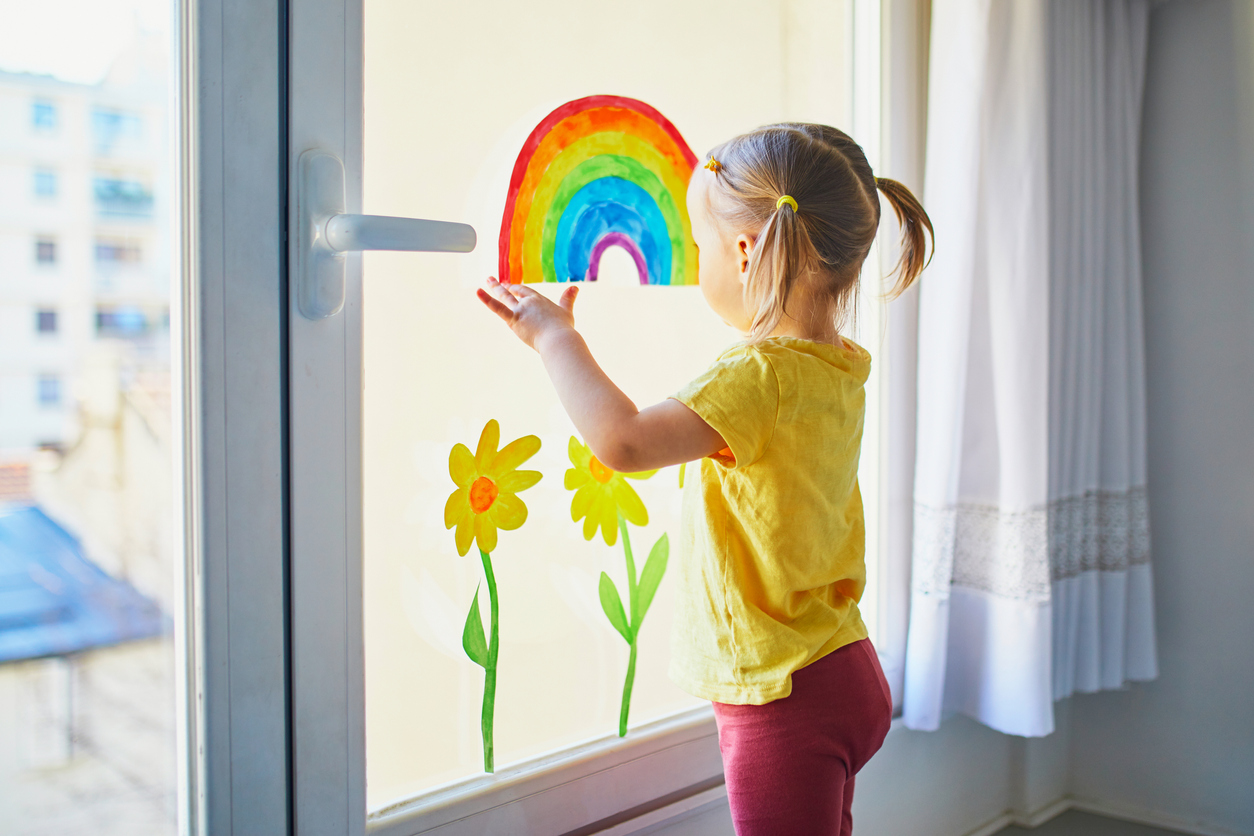
How to paint on glass with acrylic?
Stencils, freehand or patterns? We need to release our inner creativity and come up with something fabulous. Sorry for bringing out my inner yogi, but this is the fun part.
Once you have prepped your acrylic paint, you must confirm your design. You can use freehand, painter’s tape or a stencil to create your work.
You do not need to prime your glass surface, as glass and acrylic paint work so well together.
PRO TIP 1: If you are using a pattern, place it inside the glass and tape it in place, so you can see the pattern thru the glass. Also, place an old sock or cloth inside a glass for your pattern to be more visible! Genius, right?

Then start painting! If you make a mistake you can use cotton tips or balls dipped in nail polish remover to help remove it – but as always be careful! Apply additional coats if necessary.
Please, please, please, wait to remove the painter’s tape until after the glass is dried.
PRO TIP 2: If the glass piece you use for acrylic paint is used for foods or beverages, tape off any areas that may come in contact with your mouth.
How to Make Acrylic Paint Adhere to Glass
Getting acrylic paint to bond securely to glass requires proper surface preparation and painting techniques. Here are the key steps:
Clean – Wash glass with soap and water, then wipe clean with glass cleaner to remove any residue. This ensures paint will adhere directly to the glass.
Sand – Lightly sand the glass with 400-600 grit sandpaper. This etches the ultra-smooth surface so paint can grip. Don’t sand too aggressively or you’ll make the glass cloudy.
Prime – Apply a thin coat of acrylic bonding primer and let cure fully. The primer facilitates bonding between the paint and glass.
Thin the Paint – Dilute acrylic paint with equal parts glass/tile medium and water. Thin coats bond better than thick paint.
Apply in Layers – Brush on multiple thin layers of diluted acrylic paint. Allow at least 1 hour of drying time between coats.
Sand Between Layers – Once dry, gently sand each layer to smooth any texture. This improves interlayer adhesion.
Finish with Varnish – After the final coat has cured, apply 1-2 layers of acrylic varnish for added protection.
Properly prepping the glass followed by thin, layered acrylic paint application produces finishes that resist chipping, scratching, and peeling. With the right surface and paint preparation, acrylics adhere strongly to glass.
How to Seal Acrylic Paint on Glass
Okay, you have waited it out and now your glass is dried. Remove the tape and let the sealing begin! Why seal acrylic paint, you ask?
Because after all that work, you want to make sure nothing gets chipped or even worse, fades after time.
What Can I Use to Seal Acrylic Paint on Glass?
1. Can I use Mod Podge ?
I’m not big on using Mod Podge to seal acrylic paint on glass because Mod Podge is more of a tough white glue and won’t give you that clear gloss that a glass product should. Looking for something that will give you a glossy look.
Don’t get me wrong! I love Mod Podge and they do have an acrylic sealer; I prefer one of these two methods: Spray it or bake it!
2. Sealing Acrylic with Spray
If you spray it, find a spray-on sealant like this one. A gloss finish will have a lot of shine on your glassware.
Shake well and stand a good distance before spraying your product in excellent even strokes, back and forth. Wait about 15 minutes, and add another coat, then wait again.
I hear the song’s lyrics as I wait and wait “Tick-Tock on the clock, but the party doesn’t stop.”
3. Bake to Sealing Acrylic Pain
If you want to bake it, you don’t have to pay for the sealant; you have to turn on your oven to 350. Bake it for 30 minutes. Let it cool before touching it! You will get just as beautiful an outcome as spraying it.
Tip: Don’t put a glass item into the oven when it’s pre-heating or you may hear a shatter! You might find
You might find interesting reading also: How to seal acrylic painting?
How to Maintain or Clean Your Acrylic Painted Glassware?
Now that you are using your glassware, the last thing we want is for it to be damaged. You can dish wash it on the top shelf, but I prefer to handwash it but not soak or scrub it too hard.
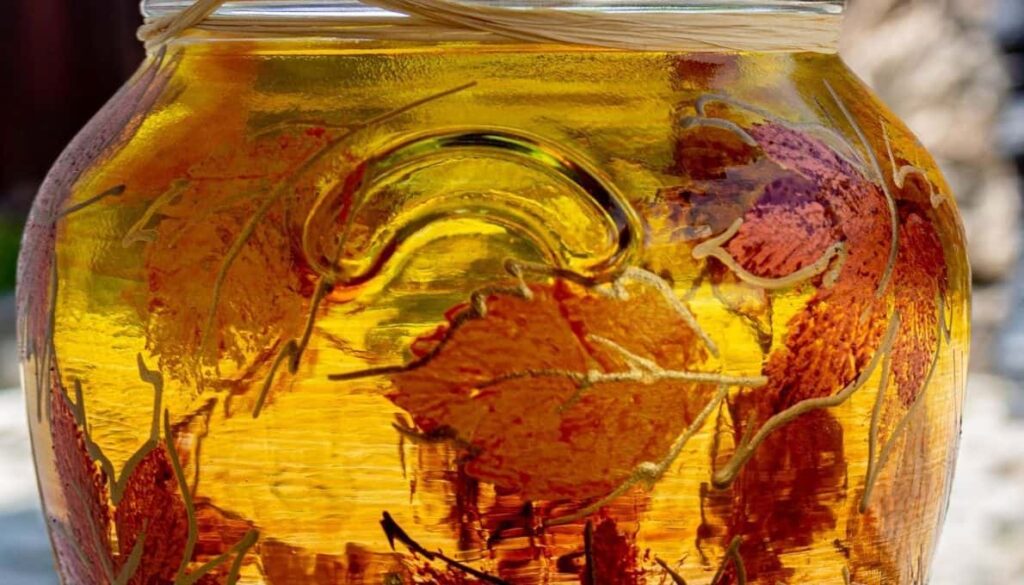
Not so bad right? Just a few quick tips and easy purchases you can get painting. With the holidays always around the corner, this is a sure way to get some fun, creative projects under your belt!
Any age can do this, and let’s be actual practice makes perfect.
Now get up and start painting!
Related questions
Can I use regular acrylic paint on glass?
Yes, you can use regular acrylic paint on glass. However, some additional steps may be required to help the acrylic paint adhere properly.
How do you get acrylic paint to stick to glass?
To get acrylic paint to stick to glass, first clean and lightly scuff the surface. Then apply an acrylic bonding primer or adhesive. Let it dry fully before painting. This provides tooth for the acrylic paint to grip the slick glass surface.
Will acrylic paint wash off of glass?
When dry, acrylic paint forms a plastic-like film that should not wash off glass if properly prepared first. Avoid excessive moisture contact and abrasion on the painted glass surface. Acrylic paint will fuse strongly to glass treated with an acrylic binder.
Can you use acrylic paint on glass windows?
Yes, you can use acrylic paint on glass windows if you properly prepare the surface first. Clean and lightly sand the glass to create tooth. Apply an acrylic primer or adhesive and let it fully dry. This helps the acrylic paint adhere strongly. Paint in thin layers and allow drying time between coats. Acrylics form a durable plastic-like film on glass that resists chipping when correctly prepped.
